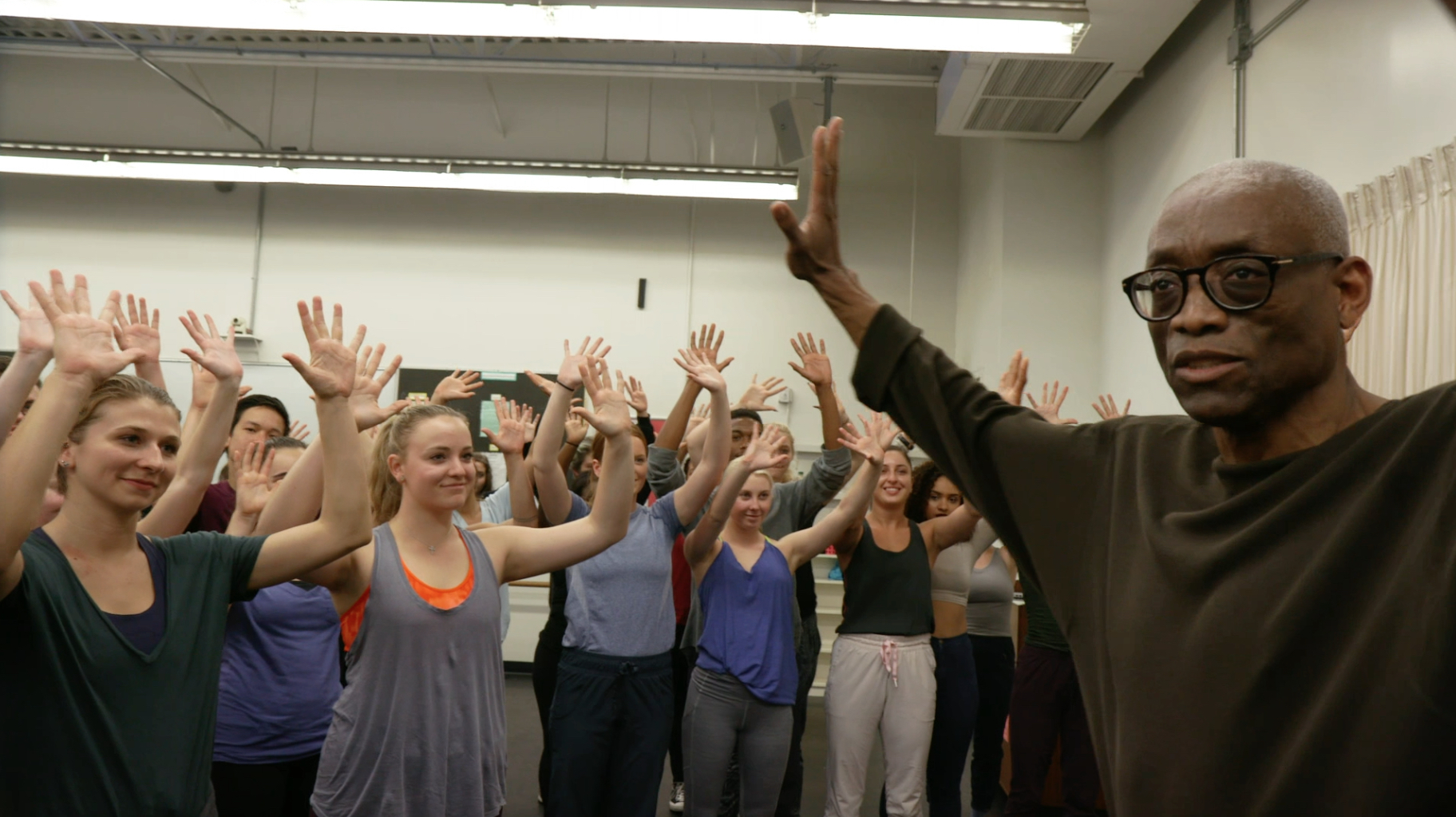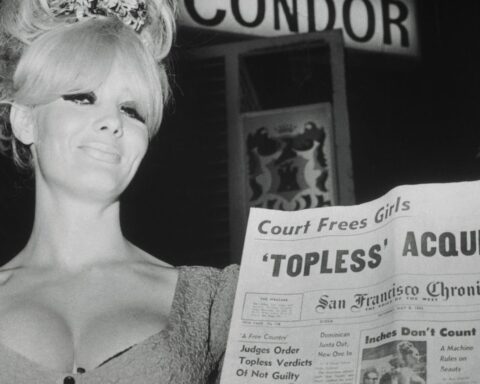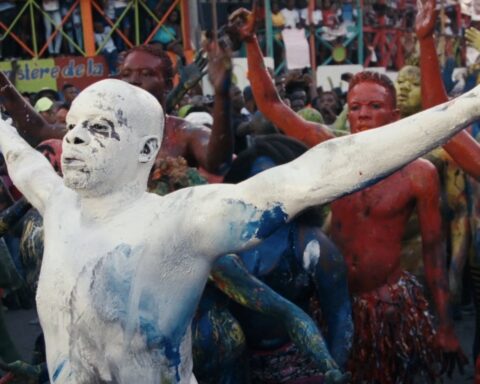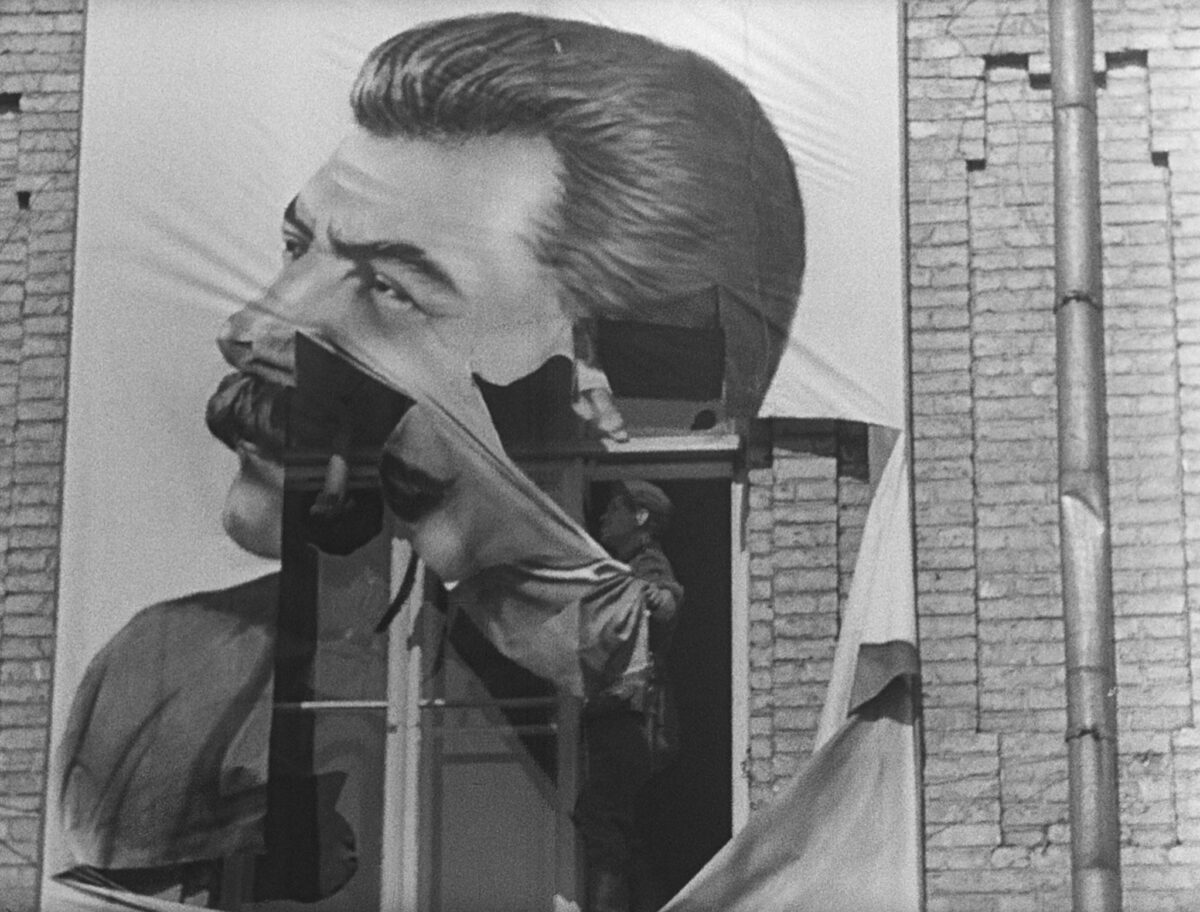Can You Bring It: Bill T. Jones and D-Man in the Waters
(USA, 90 min.)
Dir. Rosalynde LeBlanc and Tom Hurwitz
In a recent interview with the Los Angeles Review of Books, Vivian Gornick reflects on what makes art meaningful. “I never think of style as superior or prominent,” she says, “in that I think that what matters is how much, how deeply, a writer feels, how much she or he perceives.” She goes on: “If I can read a book written a hundred and fifty years ago and still feel connected to the emotional truth that the writer is communicating, out of which grows the style…,” her tone changes mid-sentence; she becomes animated: “it’s not that style comes first never, that is not what it’s all about ever.”
This insight—that emotional truth is what makes art last—and the belief that form follows feeling are what drives Rosalynde LeBlanc and Tom Hurwitz’s Can You Bring It: Bill T. Jones and D-Man in the Waters, a feature documentary that honours the legacy of Bill T. Jones’s modern dance classic, D-Man in the Waters. Lyrical and expertly paced, Can You Bring It feels like the work of a choreographer. It collects strong voices and images, and it opens a vista onto Jones’s political work and the lesser-known world of modern dance, which, like any art form, is absorbed in a conversation with its past as it looks towards its future.
In 1983, acclaimed choreographer, Bill T. Jones, and his partner, Arnie Zane, founded their dance company. The atmosphere was alive and energetic. The company quickly became a diverse, tight knit, and playful community. Bill and Arnie imagined choreography based on each individual dancer, what she or he had to bring to the group and the myriad ways they might interact as personalities on a stage. But it was 1983 and the AIDS epidemic was only beginning to take its toll. The mood in New York shifted throughout the decade as thousands of down-towners—particularly queer, trans, and racialized people—died of the disease. In 1988, Arnie Zane died, leaving his work, love and legacy to Bill T. Jones.
Jones, now running the company on his own, decided to continue with a company that had become a community. But where dance was once part of the play of living, an extension of Jones’s relationship with Arnie; a place where movement manifested life’s basic expressiveness, it was now a function of mourning, a place where the group contended with loss, anger, and the imperative to make art despite mass death. During those long months after losing Zane, Jones held free form sessions. He played music and invited his dancers to improvise, to dive into the floor, to move, to feel, and to work through pain by moving their bodies. It was the work of collective grief and catharsis, and eventually it took on a distinct form.
That form was D-Man in the Waters, a career-defining piece of modern dance, one of the most significant artworks to come out of the American AIDS crisis in the 1980s. Set to Mendelssohn’s superb String Octet in E-flat Major (Opus 20), D-Man is a marathon of gruelling physical dynamics, athletic prowess and gripping emotion. The music builds towards a climax which is continuously deferred, a stressed and elongated jouissance. Dancers scatter across the stage and regroup; they leap, kick, spin, lunge, slip, lag, and are carried across the stage. Physically demanding, exhausting to perform, D-Man celebrates the rigour and energy, the torpid joy, the falling and the being held that expresses this period of intense fear and loss.
In Can You Bring It, archival material from the original D-Man performance is cut together with footage of a contemporary performance, remounted by dancer-director Rosalynde LeBlanc as she teaches the piece to students at Loyola Marymount University. LeBlanc is interested in how D_-Man in the Waters_ can transcend its time, how it might continue to nourish dancers and audiences today.
Part of the allure of Can You Bring It is LeBlanc herself. Her attachment to D-Man is deep and emotional. Early in the film she tells the audience, “I became a dancer because I saw D-Man in the Waters when I was sixteen years old.” She went on to become a full-time member of the Jones/Zane company and to perform D-Man all over the world. For LeBlanc, it’s been a lifetime of engagement, of mining the piece, getting to know its contours, and throwing (quite literally throwing) her body at it. Now she stands to show what art can do for a person. How it can burrow into a soul and give that soul a language. When the work resonates and the emotional register hits just so, something happens, something Bill T. Jones calls redemption. LeBlanc is a woman redeemed.
Here, Gornick’s words echo: “it’s not that style comes first never, that is not what it’s all about ever.” LeBlanc understands that if art endures, it is because of its emotional force. The question then becomes one of how to create emotional continuity in performers and audiences who did not live through D-Man’s calamity, the devastation at the height the American AIDS crisis.
Unlike books, paintings, films, or musical recordings (material documents that speak for themselves) dance requires bodies to transmit meaning. To keep D-Man alive, dancers must be able to “bring it,” emotional nuance, night after night.
As the students rehearse the piece, LeBlanc sees empty movements. Pure style and none of the sustaining feeling that makes the D-Man recognizably great. In an effort to bring truth into the room, LeBlanc shouts, “What is our AIDS right now?” “What are we going through?” “Us.” “Us and the audience.” “Everyone.” Her voice cracks as though she is about to cry. The documentary plays on this tension, the tenderness LeBlanc feels towards the students and her frustration in trying to teach them something practically unteachable: to dance as if they’re falling apart and their work on stage is their only means of living it out. “The stakes have to be as high as they were,” she says. They’re not the same stakes, but they have to be as high… Do you dare to let the stakes really be high? Do you dare?” Bill T. Jones, visiting Loyola Marymount to oversee the college production asks the students, “What does this community share that is so big and so tragic that you need a piece like this to move it and give it body?”
The students are young, working hard, and usually missing the point. They search for their “stakes” but do not always successfully mark the difference between personal anxiety and social adversity, or between blunders and tragedies. As part-time dancers with various academic majors, they are unlikely to recreate the intense community feeling of the Jones/Zane Company or others like it. They can’t create the kind of feeling that makes collective rapture or grief possible, and which may very well come out of making a career of dance, deciding to live for “it”—the “it” that must be brought.
All the same, LeBlanc’s passion for D-Man is stirring, and it stirs something in her students. Can You Bring It is about how art lives on, but it is also about art how art passes on—from teacher to student and from one generation to the next. LeBlanc succeeds in mapping something onto her students—if not the entire emotional world of D-Man, then hints of what that world contains and where one might look to find it.
Can You Bring It streams via TIFF.net. beginning July 23.














